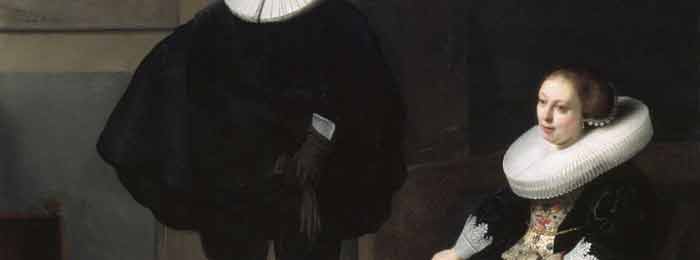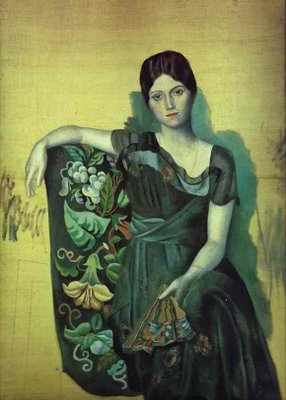On 26 Feb, 2011 With
The Death of Marat by Jacques-Louis David The Death of Marat (French: La Mort de Marat ) is a 1793 painting in the Neoclassic style by Jacques-Louis David, it is one of the most famous images of the French Revolution. This work refers to the assassination of radical journalist Jean-Paul Marat, killed on the 13th of July 1793 by Charlotte Corday, a French Revolutionary figure from a minor aristocratic family. Corday, who blamed Marat for the September Massacres and feared an all out civil war, claimed “I killed one man to save 100,000.” La Mort de Marat Jacques – Louis David and a quote by fashion photographer Eugenio Recuenco Jean-Paul Marat (24 May 1743 – 13 July 1793), was a…
Read More
On 16 Feb, 2011 With
Nijinsky Photos of Nijinsky
Read More
On 18 Jan, 2011 With
The biggest art theft in American history occurred at the Isabella Stewart Gardner Museum in Boston on March 18, 1990. The stolen paintings, including the one that hung in this frame, Rembrandt’s “Lady and Gentleman in Black,” remain unrecovered. It was the art heist of the century, and 20 years on, Boston billboards are being used to jog the public’s memory, reportsTom Moroney ART LOVERS who didn’t catch Rembrandt’s The Storm on the Sea of Galilee at the Isabella Stewart Gardner Museum before 1990 can now see it on electronic billboards outside Boston – courtesy of the FBI. Twenty years ago, on March 18th, the Dutch master’s only seascape, along with a dozen other artworks, disappeared from the museum. Two billboards…
Read More
On 27 Dec, 2010 With
This original etching, Femme assise au Chapeau et Femme debout drapée, 29.1.1934 (Seated woman with a hat and standing woman draped) is one of 100 images from the famous Vollard Suite. Picasso created the etching plate that was used to print this etching on January 29, 1934. In January, 1934 Picasso stayed at his Paris studio, entering a very productive period, continuing to be inspired by Marie-Thérèse. He does not introduce her to friends or publicly acknowledge her as his mistress. In this same month artist Dali and Gala are married in Paris. This is the last full year that Olga and Picasso stay married, separating in June, 1935, but never divorcing as doing so would have required Picasso to…
Read More
On 26 Dec, 2010 With
A Picasso painting of one of his mistresses today sold for £70.3million ($106.5million) — a world record price for any artwork sold at auction. The 1932 Nude, Green Leaves And Bust, which had a pre-sale estimate of £46 million-£59million, was sold to an undisclosed telephone bidder at a Christie’s impressionist and modern art auction in New York. The sale — equivalent to £21,537 for each square inch of the artwork — surpassed the £65million paid for Giacometti’s L’Homme Qui Marche at Sotheby’s in February. The previous highest price for a Picasso was $104.2 million for Boy With A Pipe (The Young Apprentice) sold at Sotheby’s in New York in 2004. The painting, a large-scale depiction of Pablo Picasso’s mistress Marie-Thérèse…
Read More
On 24 Dec, 2010 With
Ten years later the embers of Canada’s biggest art scandal are still burning. Within 72 hours of the National Gallery of Canada reporting that it had purchased Voice of Fire, a huge abstract painting by American artist Barnett Newman for $1.76 million, the media, the public and the government went ballistic. The two-month furore that raged in the media and the House of Commons in March 1990 was Canada’s biggest art controversy. A 1996 book Voices of Fire: Art, Rage, Power and the State, edited by Bruce Barber, Serge Guilbaut and John O’Brian, chronicled the fiasco and tried to make sense of it. It all began March 7, 1990. “We rarely have a chance in today’s over-heated art market to…
Read More
On 23 Dec, 2010 With
The Women of Pablo Picasso: (1953-1973) Dejected and alone, in 1953 Picasso met Jacqueline Roque (1926 -1986) at the Madoura Pottery where Picasso created his ceramics. In 1961 (when Picasso was 79) she became his second wife. Picasso created more works of art based on Jacqueline than any of his other loves, in one year painting over 70 portraits of her. When Picasso died on April 8, 1973, Jacqueline, who had been with Picasso for 20 years, prevented Picasso’s children Claude and Paloma from attending his funeral. Jacqueline died from shooting herself in 1986.
Read More
On 22 Dec, 2010 With
Genevieve Laporte and Picasso (1951-1953) In 1944 17-year old Genevieve Laporte (born in 1927) interviewed Picasso for a school newspaper. Years later in May,1951 Picasso began an affair with the then-24 year old. The relationship started when Laporte visited the 70-year old Picasso at his studio while he was still living with Françoise Gilot. That summer of 1951 Picasso took Laporte to St Tropez, leaving Françoise behind. After declining Picasso’s invitation to move in with him in St. Tropez, she left him in 1953 at the same time that Françoise left the artist. In 1972 she went public with the affair and stored the art that Picasso created of her in a safe. In 2005, at age 79, the poet…
Read More
On 14 Dec, 2010 With
Olga Khokhlova and Picasso (1917-1927) In 1917 ballerina Olga Khokhlova (1891-1955) met Picasso while the artist was designing the ballet “Parade” in Rome, to be performed by the Ballet Russe. They married in the Russian Orthodox church in Paris in 1918 and lived a life of conflict. She was of high society and enjoyed formal events while Picasso was more bohemian in his interests and pursuits. Their son Paulo (Paul) was born in 1921 (and died in 1975), influencing Picasso’s imagery to turn to mother and child themes. Paul’s three children are Pablito (1949-1973), Marina (born in 1951), and Bernard (1959). Some of the Picassos in this Saper Galleries exhibition are from Marina and Bernard’s personal Picasso collection.
Read More
On 3 Dec, 2010 With
Rousseau and Picasso. Whilst the public often ridiculed Rousseau’s work and organisers of the official Salon exhibitions rejected his submissions, he was admired by a younger generation of avant-garde artists, many of whom also lived and worked in Montparnasse at various points in their careers. This group of artists included Picasso, who bought several of Rousseau’s paintings and held a legendary banquet, ‘Le Banquet Rousseau’, in his honour. Many of these younger artists were fascinated by so-called ‘primitive’ art, discovering a powerful form of expression in African tribal masks and other non-Western artefacts. For them, Rousseau was a homegrown curiosity, a ‘modern primitive’ whose paintings captured something of the vitality they admired in these other art forms. Picasso purchased Rousseau’s…
Read More



